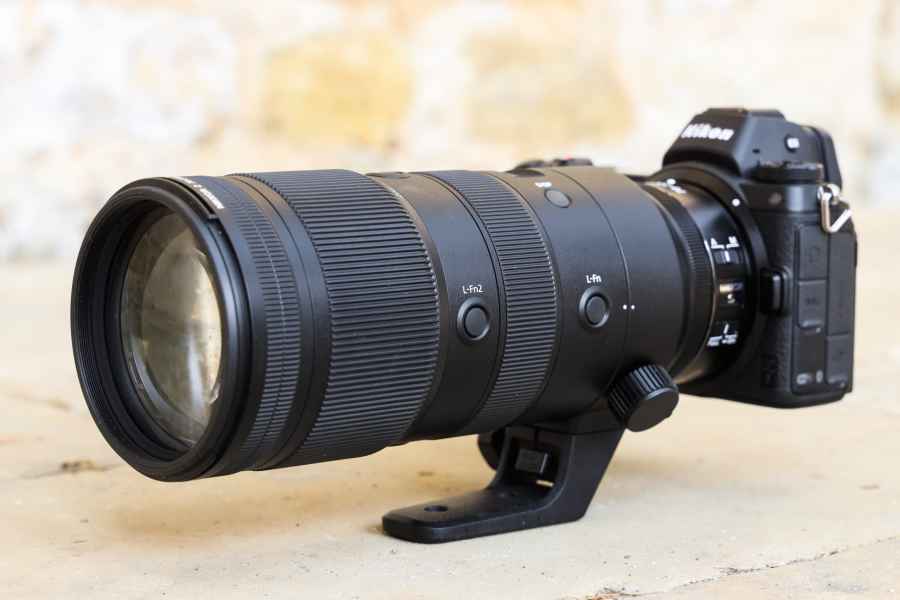Earlier this year, a few weeks before lockdown, I was fortunate to be invited on a short trip to Iceland with Nikon. The purpose of the trip was to test the Nikon D780, however I couldn’t resist packing the Nikon Z7 in my bag as backup.
In hindsight I’m glad I did as halfway through the trip I was presented with an opportunity to try one of the first pre-production samples of Nikon’s new Z 70-200mm f/2.8 VR S for a few hours on the world-famous black sand beach at Reynisfjara. That evening I examined my images on my laptop to find it produced superb results and astonishing sharpness.

Nikon Z7, Nikkor Z 70-200mm f/2.8 VR S, 1/8000sec at f/4, ISO 500 (Taken using a pre-production sample of the lens at Reynisfjara beach, Iceland)
It has taken a while to bring it to production, but two years after founding its full-frame mirrorless system Nikon finally has a fast, professional-grade telephoto zoom in the Z-mount to its name.
The Nikkor AF-S 70-200mm f/2.8G IF-ED VR II and four-year old Nikkor AF-S 70-200mm f2.8E FL ED VR have served Nikon DSLR users extremely well over the last decade, so can this new-generation lens provide the perfect springboard to produce better images for those shooting with the Z5, Z6 and Z7? I took the opportunity to use it extensively over a period of a fortnight to find out.
Nikon Nikkor Z 70-200mm f/2.8 VR S: Features
As to be expected of a lens that’s made for high-end, professional use, the Z 70-200mm f/2.8 VR S is as advanced as a fast telephoto zoom gets. It is, at the time of writing, the longest focal length S-Line lens, however this is set to change when Nikon introduce their S-line 100-400mm and 200-600mm telephoto zooms that are published on the company’s Z lens roadmap.

The Nikkor Z 70-200mm f/2.8 VR S is quite a brute and weighs 1440g on the scales
As a medium-telephoto lens, it’ll be used by a wide variety of photographers from those who shoot action, wildlife and sports, to reportage, portrait and wedding photographers that favor working from greater distances to their subject to create an unintimidating, standoff approach.
Unlike Canon’s RF 70-200mm F2.8L IS USM (£2659) that weighs just over 1kg and is surprisingly compact with an extending barrel, Nikon’s equivalent is considerably longer and weighs a substantially more. The reason for its heft lies in its complex optical construction, which features no fewer than 22 elements in 18 groups.
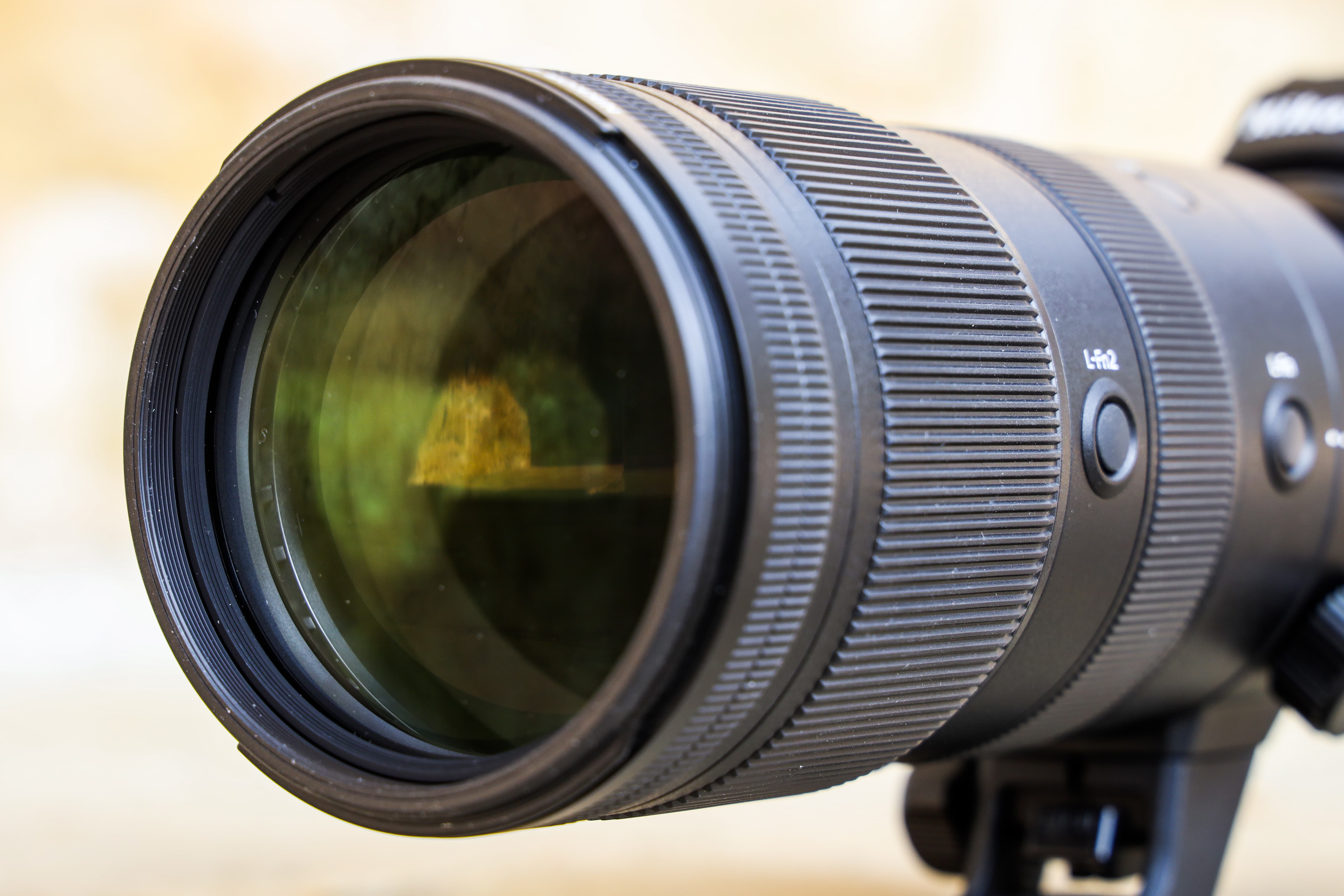
The lens accepts filters and adapters via a 77mm thread at the front
Included within are six extra-low dispersion (ED) glass elements, two aspherical elements, one fluorite element and one short-wavelength reactive (SR) element. The latter is a specialized-dispersion glass lens featuring characteristics to greatly refract light with wavelengths shorter than that of blue.
By controlling short-wavelength light that is difficult to compensate, light of various specific wavelengths can be more effectively collected achieving highly precise chromatic aberration compensation.

A view of the metal mount and 11 lens contacts. The control ring is visible just ahead of the AF/MF switch
To prevent flare and ghosting, Nikon combines its Nano Crystal coating with its latest muti-layer ARNEO coating that compensates for light entering the lens from vertical angles and maximises contrast and sharpness when shooting towards the light.
In addition, a fluorine coating is added to the front element to prevent dust, water, grease and dirt adhering to its surface, ultimately making it easier to clean.

The zoom and manual focus rings are rubberised
Complimenting the complex construction is a 9-blade rounded aperture diaphragm, which can be set between a maximum aperture of f/2.8 and a minimum of f/22. To guarantee fast, accurate and silent autofocus, a powerful stepping motor (STM) combines with Nikon’s Multi-Focus System.
At 70mm, focus can be achieved as close as 0.5m (1.64ft) from a subject, whereas at full telephoto it has a minimum focus distance of 1m (3.28ft). An internal focusing system prevents the front element rotating and screw-in filters and adaptor rings are attached via a 77mm thread.
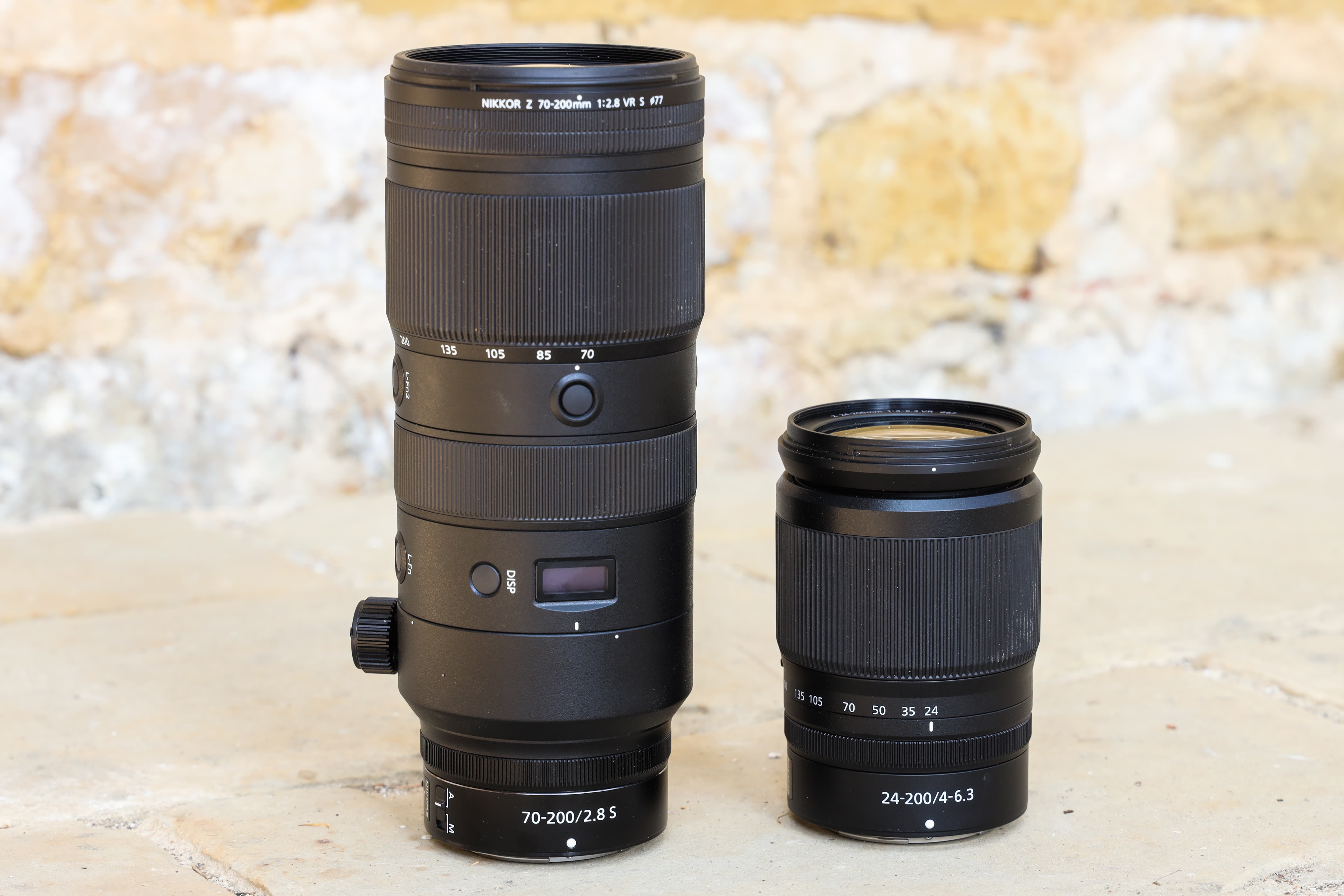
The Nikkor Z 70-200mm f/2.8 VR S (left) alongside the Nikkor Z 24-200mm f/4-6.3 VR (right) showing how much larger it is by comparison
The VR initials denotes that the lens features an internal optical vibration reduction system too, which is different to most other S-Line lenses that solely depend on the camera’s in-body image stabilisation (IBIS) to counteract handshake.
The VR system built into the lens uses voice coil motors (VCMs) to correct for lens shift and works in harmony with the 5-axis IBIS built into Nikon’s full frame mirrorless cameras to provide a maximum of 5.5 stops of compensation.
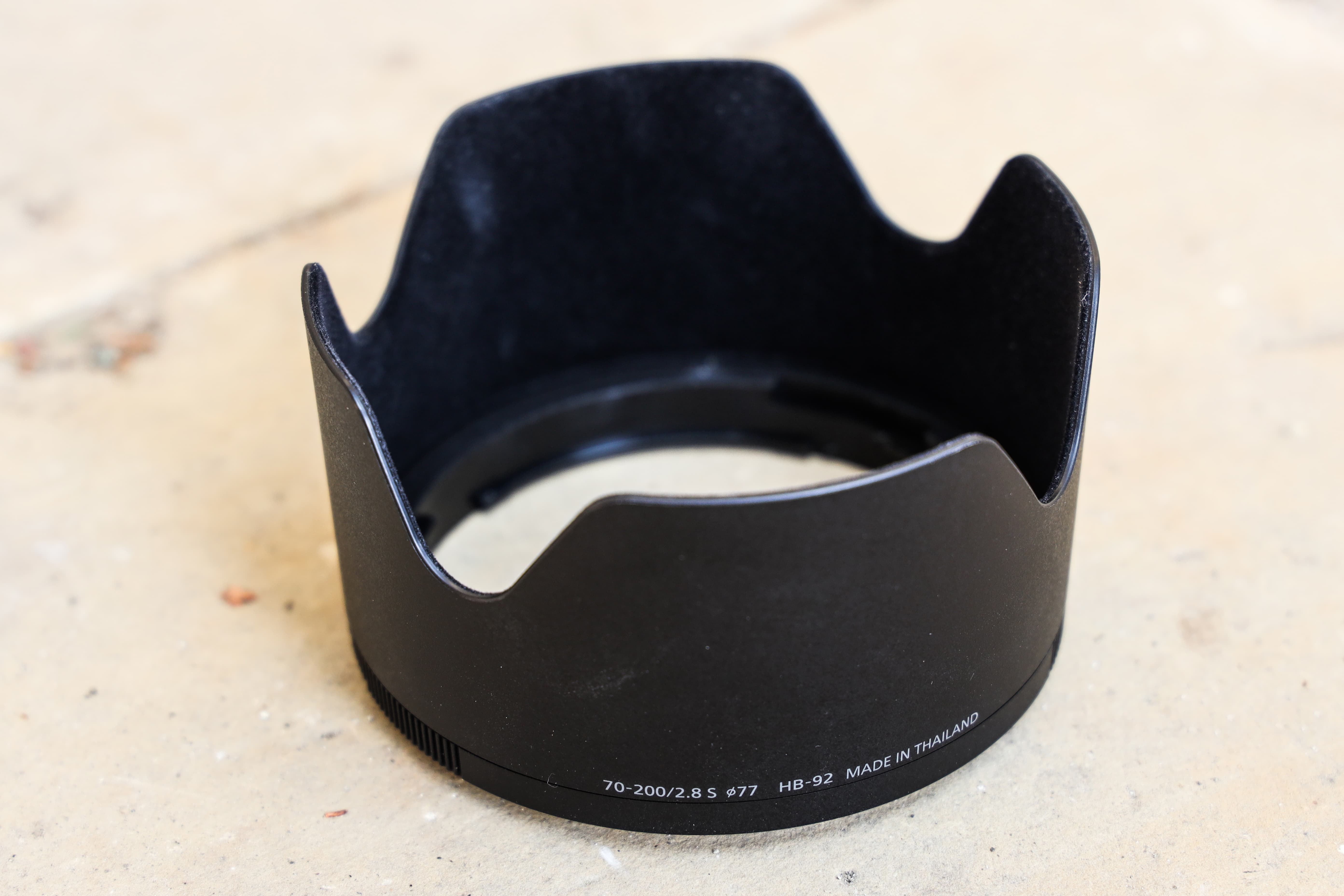
Nikon’s HB-92 lens hood comes supplied with the lens
In the box you’re provided with a plastic petal-shaped hood that has its own lock release button and is lined with felt on the inside. This is in addition to front and back caps and a soft pocket wrap that keeps it protected from getting scuffed in your bag.
Nikon Nikkor Z 70-200mm f/2.8 VR S: Build and Handling
The lens offers no shortage of control. At the rear you get an AF/MF switch that’s located above a second switch that’s used to limit the focus distance to infinity to 5m for times when you don’t want to focus across its full range.
Just ahead of these you’ll find the customizable control ring that can be used for aperture control, exposure compensation or ISO adjustments and is useful during video recording or situations where silence is critical.
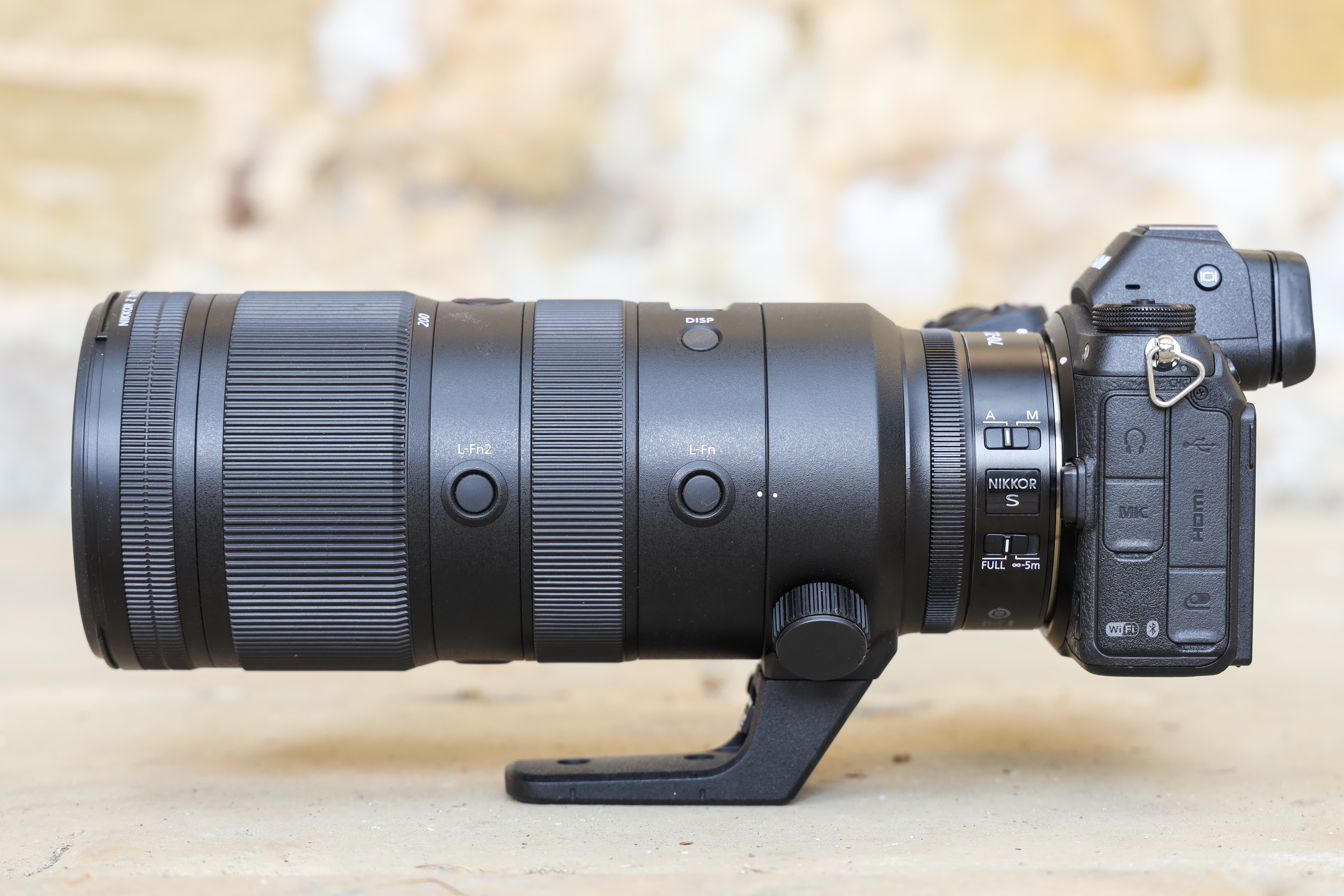
A side view showing the Z 70-200mm f/2.8 VR S mounted to the Nikon Z7. You can clearly make out the L-Fn and L-Fn2 buttons either side of the manual focus ring
One thing to be wary of though is that is extremely sensitive and only needs to be moved by the slightest amount to make a change. On more than one occasion I found myself going too far before having to dial the adjustment back.
Advance down the barrel and you come to the dimmable, built-in electroluminescent (EL) display panel – a feature we’re seeing more and more on premium lenses these days. The DISP button just below it lets you toggle between viewing aperture, focus distance and focal length information.
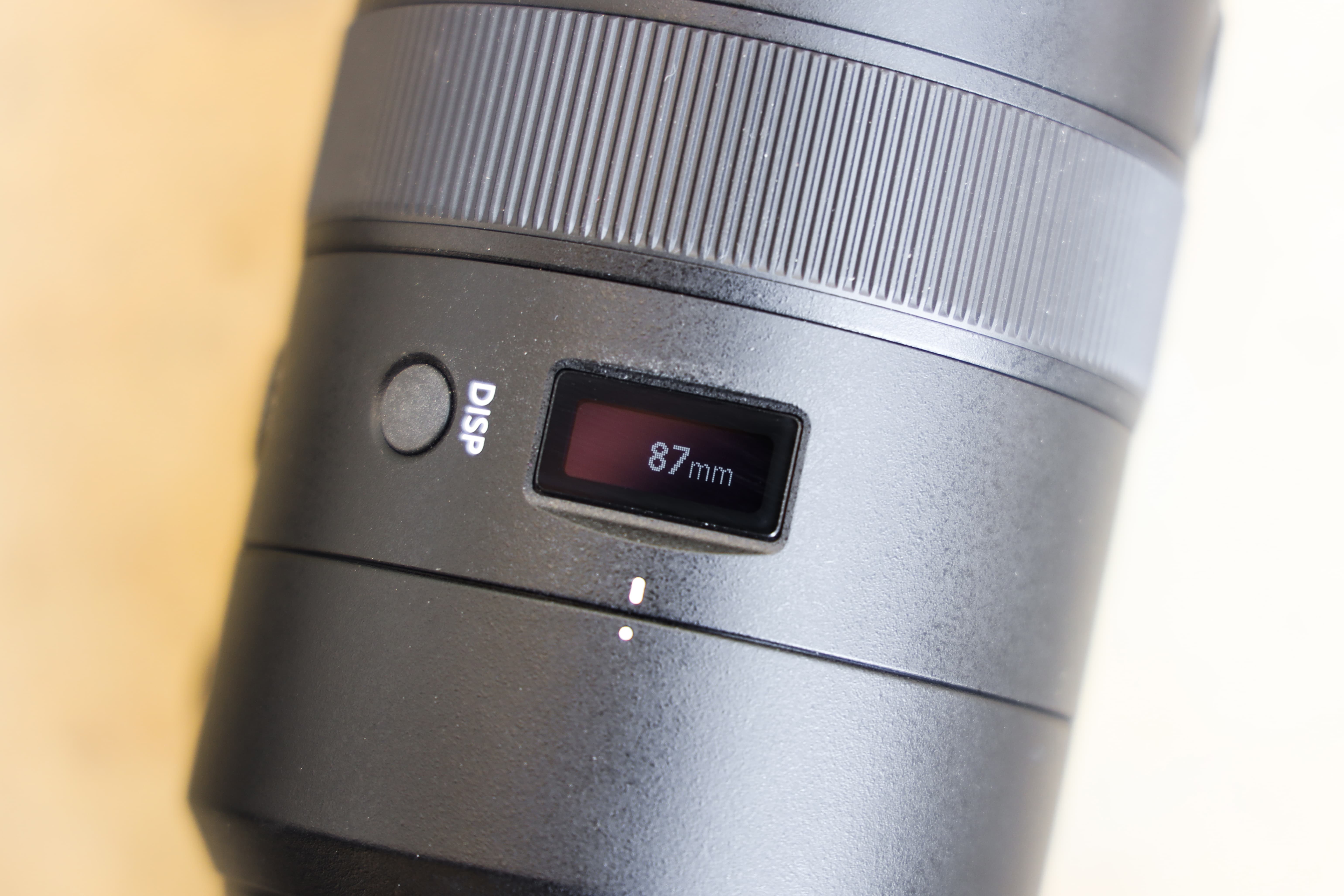
The built-in electroluminescent (EL) panel displaying focal length information
This is displayed light on dark and can be used as a way of precisely setting the focal length identically between shots. It displays focal length information in 1mm increments between 70mm and 105mm and 5mm thereafter. To preserve battery power, the panel only illuminates when the camera is powered and automatically turns off after 10 seconds of no lens-based activity.
Below the DISP button users get a customisable L-Fn button that can be setup from the camera’s custom control assignment options to perform as many as 21 different functions. The same can be said for the L-Fn2 button that’s located slightly further forward, however you will need to make sure your Z-series camera is running the latest firmware in order to take control of changing its function.

If your Z-series camera doesn’t give you the option to change the function of the L-Fn2 button it’s likely the firmware needs to be updated to support the lens
The L-Fn2 button is joined by three other buttons around the perimeter of the barrel between the focus ring and zoom ring, offering convenient control when supporting the lens in your left hand and you’re shooting in the landscape or portrait orientation.
The lens is fitted with a permanently attached tripod collar that rotates very smoothly and presents white dots to align it perfectly every 90 degrees. It doesn’t click on rotation like some premium lenses, but the foot to the collar can be unscrewed and removed, making it slightly easier to transport.
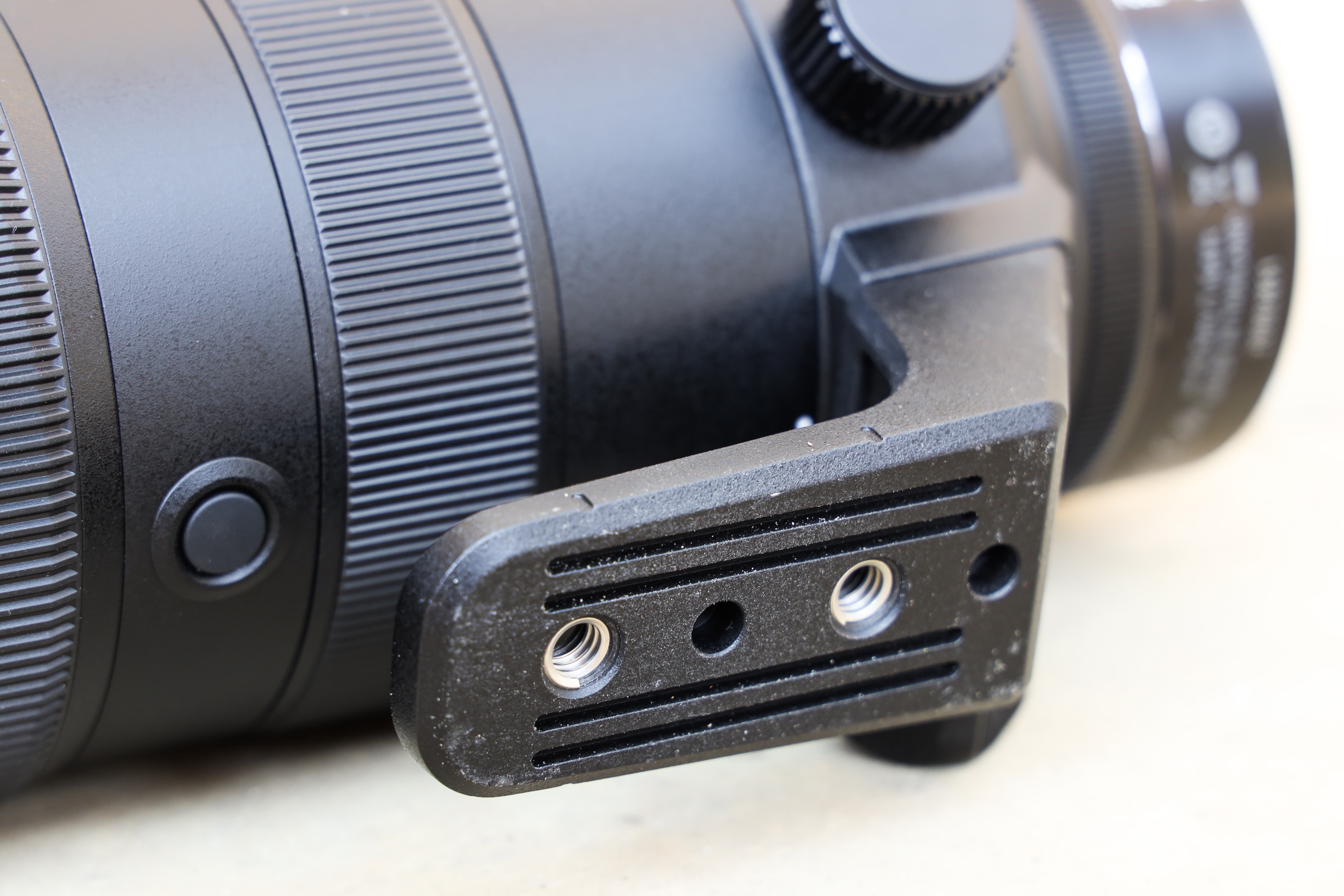
The tripod collar can’t be removed from the lens, however the tripod foot can be
Manual focusing is the fly-by-wire rather than being mechanically coupled. The rubberised manual focus ring provides smooth and precise control and it’s useful being able to refer to the focus distance information on the top panel. The zoom ring is also rubberised, provides a continuously smooth motion and operates across the zoom range in just under a quarter turn.
The overall build quality is excellent and is every bit as good as you’d expect for a lens at its price. Needless to say, it’s extensively sealed to keep dust and moisture out, including around all moving parts of the lens barrel, for worry-free durability.
Nikkor Z 70-200mm f/2.8 VR S: Autofocus
The lens autofocuses in a spritely manner in good light and signs of it hunting for focus were only observed when it was used in an extremely dim indoor setting.
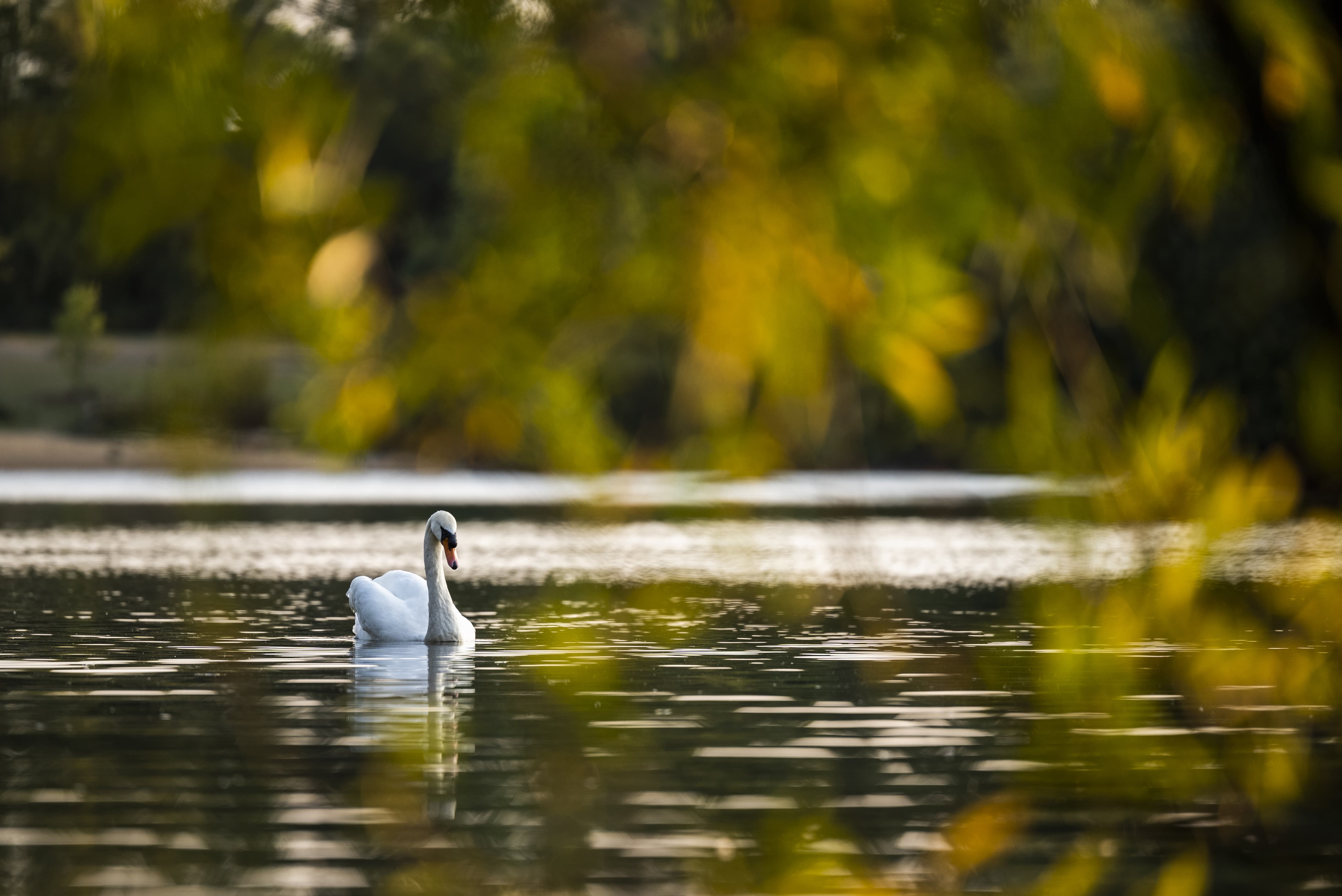
Nikon Z5, Nikkor Z 70-200mm f/2.8 VR S, 1/500sec at f/2.8, ISO 100
I assigned the L-Fn2 button to perform AF-ON for a majority of my testing and by setting the L-Fn button to playback it’s possible to review images quickly without needing to pull your left hand away from the lens. To re-enter shooting mode from playback it’s simply a case of touching the L-Fn2 button.

Nikon Z5, Nikkor Z 70-200mm f/2.8 VR S, 1/1250sec at f/2.8, ISO 50
When you hold the lens to your ear you can make out faint whirring as it focuses, but it’s of such low frequency it can’t be perceived in the audio that’s recorded by the in-built microphone.
Nikon Nikkor Z 70-200mm f/2.8 VR S: Performance
As well as examining real-world images, I conducted tests at various zoom settings across the aperture range coupled to Nikon’s 45.7-million-pixel Z7 to form a better understanding of its optical performance.

Nikon Z7, Nikkor Z 70-200mm f/2.8 VR S, 1/1600sec at f/2.8, ISO 64
Like other camera manufacturers, Nikon embeds lens correction profiles for its Z lenses into the cameras raw files, meaning they’re applied automatically by the software you use.
Edge sharpness at 70mm doesn’t equal that in the centre at f/2.8, however you’ll find corners sharpen up by stopping down to f/4 and f/5.6. Centre sharpness at its maximum aperture at longer focal lengths (135mm and 200mm) is very impressive, with corners again sharpening up when stopped down, though not to quite the same extent as at the wider end of the zoom.

Nikon Z7, Nikkor Z 70-200mm f/2.8 VR S, 1/1600sec at f/2.8, ISO 64
To obtain the so-called ‘sweet spot’ of sharpness from the centre to the edge of the frame, users will want to use an aperture setting close to f/5.6. Stop down beyond f/11 and diffraction starts to have its say in softening fine detail, so it’s worth avoiding f/16 and f/22 wherever possible.
Even with built-in lens corrections applied, you can still expect vignetting at the edge when the lens is used wide-open. Corner shading subsides by stopping down and cannot be traced when you reach f/4 at 70mm and f/5.6 at 200mm.

Nikon Z5, Nikkor Z 70-200mm f/2.8 VR S, 1/4000sec at f/2.8, ISO 50
The lens controls chromatic aberrations as well as any lens I’ve ever tested. Even in shots taken directly towards the light, no sign of colour fringeing was observed along any high-contrast edges in either JPEG or Raw files.
The built-in lens profile does a terrific job of correcting distortion in Raw files, meaning no extra work is required to fix barrel or pincushion distortion. Anyone who regularly shoots in JPEG will want to make sure Auto distortion control is enabled from the photo shooting menu for distortion-free results.

Nikon Z5, Nikkor Z 70-200mm f/2.8 VR S, 1/640sec at f/8, ISO 200
Nikon Nikkor Z 70-200mm f/2.8 VR S: Verdict
The saying ‘good things come to those who wait’ is appropriate in the case of the Nikkor Z 70-200mm f2.8 VR S. It has been a long-time coming for Nikon Z-series users, who until recently have had little option but to pair one of Nikon’s F-mount 70-200mm f/2.8 lenses to their camera via an FTZ mount adapter if they’ve wanted to use a fast telephoto zoom, adding unwanted additional weight and bulk.

The build quality is just as good as you’d expect for the price and is weather-sealed like Nikon’s Z-series cameras
Though there will be some who’ll be a little disheartened it’s no lighter or smaller than existing 70-200mm f/2.8 zooms in F-mount, it handles well with Nikon’s full-frame mirrorless cameras and presents advantages of its own.
You get 5-axis/5.5 stops of stabilisation correction compared to the 3-axis/4 stop correction you get pairing the Nikkor 70-200mm f/2.8E FL ED VR with a Z-series camera via the FTZ adapter.
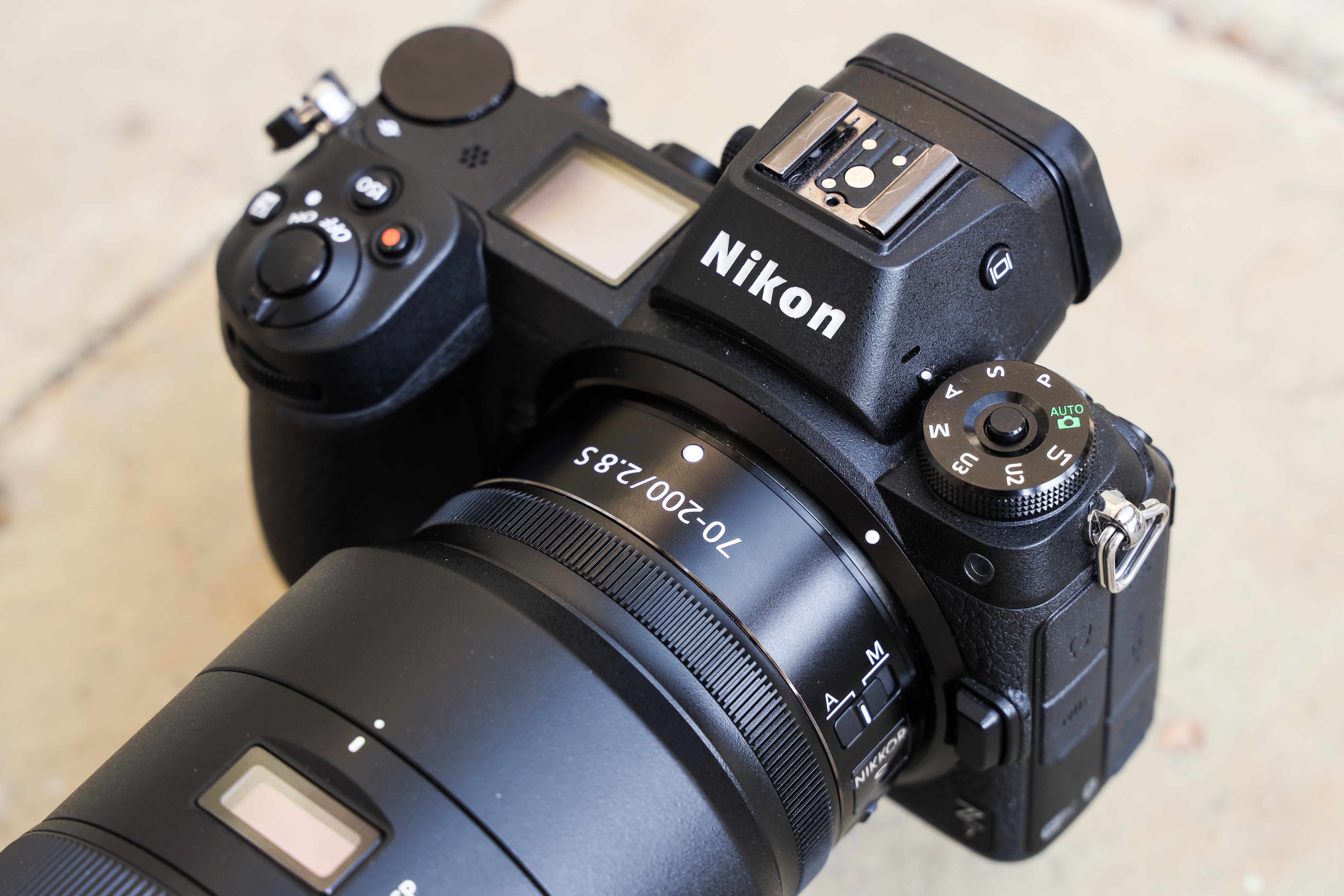
One of our only criticisms is that the control ring is a touch too sensitive
What’s more, it’s able to focus closer at its widest point in the zoom range, features state-of-the-art optics and coatings, plus it provides great control from your left hand via its custom control ring and six buttons on the barrel. To top it off, it’s compatible with Nikon’s new Z-mount 1.4x and 2x teleconverters if greater reach is required.
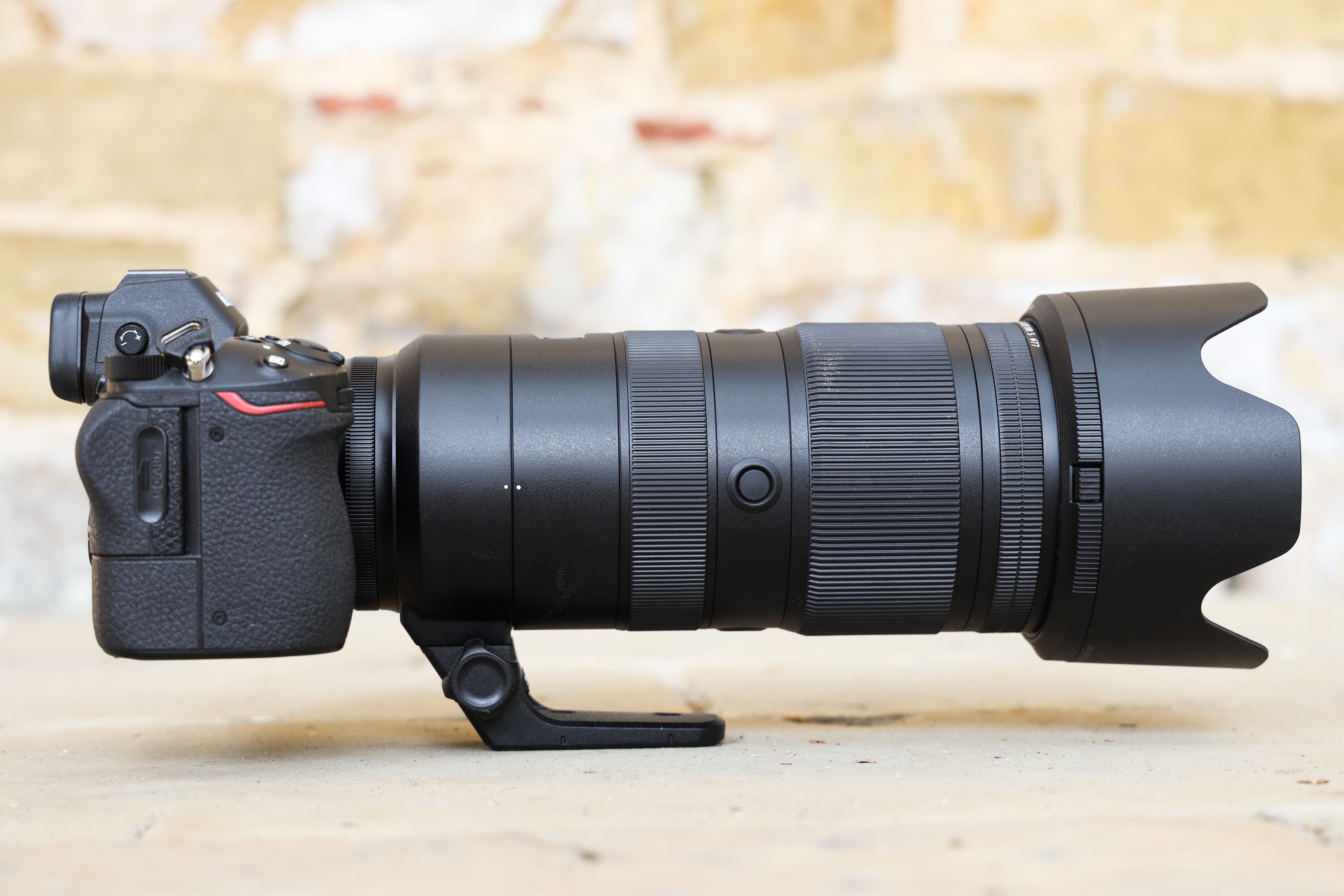
At the time of review the Z 70-200mm f/2.8 VR S is the only lens covering this focal length in Nikon’s Z-mount lineup
With an exemplary optical performance that produces tack-sharp images, beautiful background blur and excellent contrast, this is a lens all Z-series users will aspire to own. If it breaches your budget you may want to hold out for a Z-mount 70-200mm f/4, which we’d expect to be smaller, lighter and cheaper. This is yet to make its way onto Nikon’s lens roadmap though so it’s arrival could be some way off.


